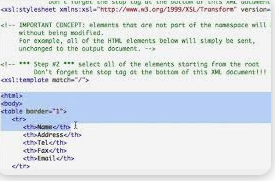Forex trading, also known as foreign exchange trading, is a global marketplace for exchanging national currencies against one another. Due to the worldwide reach of trade, commerce, and finance, forex markets tend to be the largest and most liquid asset markets in the world. Traders, both beginners and seasoned professionals, must grasp a wide array of terminologies unique to this market to navigate effectively. Understanding these terms is crucial not only for effective communication but also for making informed trading decisions. In this article, we will delve into the key terminologies used in forex trading, starting with the basics of forex trading itself.
What is Forex Trading?
Forex trading involves buying and selling currencies to profit from the changes in their exchange rates. This market operates 24 hours a day, five days a week, and is utilized by individuals, companies, and institutions to hedge against international currency and interest rate risk, speculate on geopolitical events, and diversify portfolios, among other reasons.
Key concepts within forex trading include understanding the forex market’s structure, the role of forex brokers, and the various orders and strategies traders can use to manage their trades. By familiarizing yourself with these concepts and terms, you can better comprehend market movements and make more strategic trading decisions.
What are Currency Pairs in Forex Trading?
Currency pairs are the core of forex trading, representing the value of one currency relative to another. In forex, currencies are always quoted in pairs because you are simultaneously buying one currency and selling another. This pairing allows traders to speculate on the relative strength of one currency against another.
How Currency Pairs Work
A currency pair consists of a base currency and a quote currency. The base currency is the first currency listed in the pair, while the quote currency is the second. The pair shows how much of the quote currency is needed to purchase one unit of the base currency. For example, in the EUR/USD pair, the euro (EUR) is the base currency and the US dollar (USD) is the quote currency. If the pair is quoted at 1.2000, it means 1 euro can be exchanged for 1.2000 US dollars.
Currency pairs can be classified into three categories: major pairs, minor pairs, and exotic pairs. Major pairs include the most traded currencies globally, such as EUR/USD, USD/JPY, GBP/USD, and USD/CHF. These pairs have high liquidity and tight spreads due to their significant trading volume. Minor pairs, or cross-currency pairs, do not include the US dollar, like EUR/GBP or AUD/NZD. Exotic pairs involve one major currency paired with a currency from an emerging or smaller economy, such as USD/TRY or USD/SGD.
Importance and Types of Currency Pairs
Understanding currency pairs is crucial for forex trading as it influences trading strategies and risk management. Major currency pairs are preferred by traders due to their stability and lower transaction costs. The liquidity of these pairs means that large trades can be made without causing significant price movements. This is essential for traders who rely on quick execution and minimal slippage.
In contrast, minor and exotic pairs can offer higher volatility and larger spreads, providing both opportunities and risks. These pairs are often influenced by local economic conditions, political events, and market sentiment, making them suitable for experienced traders who can manage the additional risks.
What is a Base Currency and a Quote Currency?
In the forex market, understanding the roles of the base currency and the quote currency is fundamental. These terms are used to describe the components of a currency pair, and knowing their function helps traders read and interpret forex quotes accurately.
Definition and Function
The base currency is the first currency listed in a forex pair and is the currency that you are buying or selling. The quote currency, on the other hand, is the second currency in the pair and represents the amount needed to buy one unit of the base currency. For instance, in the GBP/USD pair, the British pound (GBP) is the base currency, and the US dollar (USD) is the quote currency. If the pair is quoted at 1.3000, it means 1 GBP is equal to 1.3000 USD.
Example and Calculation
Let’s take the EUR/USD pair quoted at 1.2500. Here, the base currency is the euro (EUR), and the quote currency is the US dollar (USD). This quotation indicates that one euro is equivalent to 1.2500 US dollars. In practice, if a trader buys the EUR/USD pair, they are buying euros and selling US dollars. Conversely, selling the pair means selling euros and buying US dollars. This bid-ask spread allows traders to speculate on the direction of the currency’s value based on various economic indicators and market conditions.
Understanding these terms is crucial for executing trades and managing positions effectively. It helps in calculating the required margin, potential profit or loss, and in devising trading strategies that can take advantage of market movements.
How Do Bid and Ask Prices Work in Forex?
The bid and ask prices are fundamental components of forex trading, determining the price at which traders can buy or sell a currency pair. These prices are essential for executing trades and understanding the market’s dynamics.
Explanation of Bid and Ask Prices
The bid price is the highest price that a buyer is willing to pay for a currency pair. Conversely, the ask price (or offer price) is the lowest price at which a seller is willing to sell the currency pair. The difference between these two prices is known as the spread, which represents the transaction cost for traders. For example, if the EUR/USD bid price is 1.2000 and the ask price is 1.2002, the spread is 2 pips.
Importance in Trading
The bid and ask prices are critical for forex trading as they affect the entry and exit points of trades. When you place a buy order, you will be filled at the ask price, and when you place a sell order, you will be filled at the bid price. This mechanism ensures that traders can enter and exit the market at competitive prices, but it also means that the spread is a cost that must be considered in trading strategies. Tight spreads are beneficial for traders as they reduce the cost of trading, which is why highly liquid currency pairs typically have lower spreads.
The bid-ask spread can vary depending on market conditions, such as volatility and liquidity. During times of high market activity, spreads tend to narrow, while during low liquidity periods, spreads can widen. Understanding how bid and ask prices work helps traders make informed decisions and optimize their trading performance.
By grasping these essential forex trading terminologies, traders can better navigate the complexities of the forex market, make informed decisions, and develop effective trading strategies.
What is the Spread in Forex Trading?
The spread in forex trading refers to the difference between the bid price (the price at which you can sell a currency) and the ask price (the price at which you can buy a currency). This difference is typically measured in pips, which are the smallest units of price movement in the forex market. For example, if the EUR/USD currency pair has a bid price of 1.1050 and an ask price of 1.1052, the spread is 2 pips.
How Spreads Work
Spreads are essentially the cost of trading. When you open a trade, you immediately incur a small loss equal to the spread. This is because you buy at the higher ask price and sell at the lower bid price. The spread compensates brokers for facilitating the trade. Therefore, understanding and managing spreads is crucial for traders, as they can significantly impact profitability. Spreads can be fixed or variable. Fixed spreads remain constant regardless of market conditions, while variable spreads fluctuate with market liquidity and volatility.
Factors Affecting Spreads
Several factors influence the size of the spread in forex trading. Liquidity plays a major role—highly liquid currency pairs, like EUR/USD, typically have tighter spreads due to the high trading volume. Conversely, exotic currency pairs with lower liquidity often have wider spreads. Market conditions, such as volatility and economic announcements, can also affect spreads. During periods of high volatility, spreads tend to widen as the risk for brokers increases.
What are Pips and Pipettes in Forex?
In forex trading, pips and pipettes are units of measurement that represent the smallest price changes in currency pairs. These units are fundamental to understanding price movements and calculating trading costs.
Definition and Importance
A pip, short for “percentage in point,” is typically the fourth decimal place in a currency pair. For instance, if the EUR/USD pair moves from 1.1050 to 1.1051, it has moved by one pip. For currency pairs involving the Japanese yen, a pip is the second decimal place (e.g., from 110.10 to 110.11). A pipette is one-tenth of a pip and adds an extra decimal place for more precise measurement (e.g., a move from 1.10505 to 1.10506 represents one pipette).
Role in Trading
Pips and pipettes are crucial for setting stop-loss and take-profit levels, as well as for calculating spreads. Understanding these units helps traders quantify and manage their risk, as well as determine potential profit or loss on trades. For example, if a trader buys EUR/USD at 1.1050 and sets a stop-loss at 1.1040, they are risking 10 pips on the trade.
What is Leverage in Forex Trading?
Leverage is a powerful feature in forex trading that allows traders to control larger positions with a smaller amount of capital. This tool can amplify both profits and losses, making it a double-edged sword.
How Leverage Works
Leverage is expressed as a ratio, such as 1:100 or 1:500. A leverage ratio of 1:100 means that for every $1 of capital, you can control $100 in the market. For example, with $1,000 in your trading account, you could trade a position size of $100,000 using 1:100 leverage. This magnifies the potential returns but also increases the risk, as losses are also amplified.
Benefits and Risks
The primary benefit of leverage is the ability to make larger trades than your account balance would normally allow, potentially leading to higher profits. However, the risks are equally significant. High leverage can result in substantial losses, especially in volatile market conditions. It is crucial for traders, especially beginners, to use leverage cautiously and to implement effective risk management strategies, such as stop-loss orders, to protect their capital.
By understanding these key concepts—spreads, pips, and leverage—traders can better navigate the forex market and make more informed trading decisions. These elements are fundamental to effective forex trading and managing the inherent risks involved.
What is Margin in Forex Trading?
Margin in forex trading refers to the minimum amount of capital a trader needs to deposit with their broker to open and maintain a position. It is not a cost but a portion of the trader’s account balance set aside as a good faith deposit to cover potential losses from leveraged positions.
How Margin Works
Margin allows traders to leverage their positions, enabling them to control larger amounts of currency than they could with their available capital alone. For instance, if a broker offers a 1% margin requirement, a trader can control $100,000 worth of currency with just $1,000. The remaining $99,000 is provided by the broker, allowing the trader to magnify both their potential profits and losses.
To calculate the margin required, traders use the formula:
Margin=Total Position Size×Margin Requirement\text{Margin} = \text{Total Position Size} \times \text{Margin Requirement}Margin=Total Position Size×Margin Requirement
For example, to open a $100,000 position with a 2% margin requirement, a trader needs to deposit $2,000.
Managing Margin and Risks
Proper margin management is crucial to avoid margin calls and potential liquidation of positions. A margin call occurs when the account equity falls below the required margin level, prompting the broker to request additional funds. Failure to meet a margin call can result in the broker closing open positions to limit further losses. To manage margin effectively, traders should:
- Maintain a buffer above the margin requirement.
- Use stop-loss orders to limit potential losses.
- Monitor margin levels regularly and adjust positions as necessary.
- Avoid overleveraging by not using excessive leverage relative to account size.
What is a Lot Size in Forex Trading?
A lot size in forex trading refers to the standardized quantity of currency units used in trading. Understanding lot sizes is essential for managing trade sizes and risk.
Types of Lot Sizes
There are three main types of lot sizes in forex trading:
- Standard Lot: 100,000 units of the base currency.
- Mini Lot: 10,000 units of the base currency.
- Micro Lot: 1,000 units of the base currency.
For example, if trading EUR/USD, a standard lot would involve 100,000 euros, a mini lot 10,000 euros, and a micro lot 1,000 euros.
Importance of Lot Sizes
Choosing the correct lot size is vital for risk management. Larger lot sizes mean higher potential profits but also larger potential losses. Traders should select lot sizes that align with their risk tolerance and account size. For beginners, starting with micro or mini lots can help limit exposure while gaining experience.
What Does it Mean to Go Long or Short in Forex?
In forex trading, “going long” and “going short” refer to the positions traders take based on their market outlook.
Going Long
Going long means buying a currency pair with the expectation that its value will increase. For example, if a trader goes long on EUR/USD, they buy euros while selling an equivalent amount of US dollars, anticipating that the euro will appreciate against the dollar. Profit is made if the euro’s value rises relative to the dollar.
Going Short
Conversely, going short involves selling a currency pair with the expectation that its value will decrease. If a trader goes short on EUR/USD, they sell euros and buy US dollars, expecting the euro to depreciate against the dollar. Profit is realized if the euro’s value falls relative to the dollar.
Understanding these positions helps traders capitalize on both upward and downward market movements, making forex trading flexible and adaptable to different market conditions. Proper analysis and risk management are essential when deciding to go long or short to avoid significant losses.
What are Bullish and Bearish Markets in Forex Trading?
In forex trading, understanding the concepts of bullish and bearish markets is fundamental for making informed trading decisions. These terms describe market conditions where the prices of currencies are either rising (bullish) or falling (bearish).
Bullish Markets
A bullish market is characterized by rising prices and positive investor sentiment. In such markets, traders expect the prices of currencies to increase over time. This optimism leads to increased buying activities, which further drives prices upward. Bullish markets are typically associated with strong economic indicators, such as high employment rates, economic growth, and favorable government policies. For example, if the EUR/USD pair is in a bullish trend, the euro is strengthening against the US dollar, indicating a favorable economic outlook for the Eurozone.
Traders in bullish markets generally adopt strategies like buying on dips, where they purchase currency pairs during minor pullbacks, expecting the overall upward trend to continue. Identifying bullish market conditions early can help traders capitalize on long positions and maximize their gains.
Bearish Markets
Conversely, a bearish market is marked by declining prices and negative investor sentiment. In these markets, traders expect currency prices to fall, leading to increased selling activities. Bearish markets often occur during economic downturns, rising unemployment, and adverse geopolitical events. For example, in a bearish trend for the USD/JPY pair, the US dollar is weakening against the Japanese yen, reflecting pessimism about the US economy.
In bearish markets, traders might employ strategies like short selling, where they sell currency pairs at higher prices with the intention of buying them back at lower prices. This approach allows traders to profit from declining markets. Recognizing bearish conditions early can help traders protect their capital and take advantage of falling prices.
How is Liquidity Important in Forex Trading?
Liquidity in forex trading refers to the ease with which currency pairs can be bought and sold without causing significant price changes. High liquidity means there are many buyers and sellers in the market, leading to tighter spreads and more efficient price discovery.
Role of Liquidity
Liquidity is crucial for traders because it affects the execution of trades and the overall cost of trading. In highly liquid markets, such as those for major currency pairs like EUR/USD or USD/JPY, trades can be executed quickly and at predictable prices, minimizing the risk of slippage. This efficiency is essential for both short-term traders, who rely on quick executions, and long-term investors, who need stable markets for their strategies.
Factors Affecting Liquidity
Several factors influence forex market liquidity, including market hours, economic events, and geopolitical developments. Liquidity tends to be highest during the overlap of major trading sessions, such as the London-New York session, where a large volume of transactions occurs. Conversely, liquidity can drop during off-peak hours or when significant economic data is released, leading to wider spreads and potential volatility.
Understanding liquidity helps traders choose the best times to trade and manage their risks effectively. It ensures that they can enter and exit positions with minimal impact on prices, thereby optimizing their trading strategies.
What is Volatility in the Forex Market?
Volatility in the forex market refers to the degree of variation in the prices of currency pairs over a specific period. It is a measure of how much and how quickly prices change, and it plays a significant role in trading decisions and risk management.
Understanding Volatility
High volatility means that currency prices are changing rapidly and significantly, while low volatility indicates more stable and predictable price movements. For traders, volatility presents both opportunities and risks. High volatility can lead to substantial profits if trades are executed correctly, but it also increases the potential for significant losses. Therefore, understanding and managing volatility is crucial for successful forex trading.
Causes of Volatility
Volatility in the forex market can be caused by various factors, including economic data releases, geopolitical events, central bank policies, and market sentiment. For example, announcements related to interest rates, employment figures, or GDP growth can lead to increased market activity and price swings. Additionally, unexpected events such as political instability or natural disasters can cause sudden spikes in volatility.
Traders often use technical indicators, such as Bollinger Bands or the Average True Range (ATR), to measure and analyze volatility. By doing so, they can adjust their trading strategies to account for changing market conditions, ensuring that they can capitalize on opportunities while mitigating risks effectively.
Conclusion
Understanding the fundamental concepts of forex trading terminology is crucial for anyone looking to navigate the forex market effectively. Terms such as currency pairs, base and quote currencies, bid and ask prices, spreads, pips, leverage, and margin form the foundation of forex trading knowledge. Mastery of these terms allows traders to execute trades with greater precision and confidence, manage their risks better, and make informed decisions based on market conditions.
Bullish and bearish markets describe the overall market sentiment and direction, influencing trading strategies significantly. In bullish markets, traders look to capitalize on rising prices, while in bearish markets, they aim to profit from falling prices. Liquidity and volatility further shape trading environments, affecting how and when traders should enter or exit positions.
By comprehensively understanding these elements, traders can develop robust trading strategies that accommodate different market scenarios. Continuous education and staying updated with market trends and economic indicators will further enhance trading success and profitability.
Armed with this knowledge, traders can confidently approach the forex market, leveraging their understanding to optimize their trading performance and achieve their financial goals. Whether you are a beginner or an experienced trader, a solid grasp of forex trading terminology and market dynamics is indispensable for navigating the complex and ever-changing world of forex trading.
🔍 Dive into Forex Trading Terminology! 💹
Are you ready to master the language of forex trading? Understanding key terms like currency pairs, spreads, pips, and leverage can transform your trading strategy and boost your confidence in the market. 📈
Our latest blog breaks down these essential concepts, making forex trading more accessible and effective for everyone. Whether you’re a beginner or an experienced trader, this guide is your go-to resource for forex success.
Read the full article now and elevate your trading game! 🚀
#ForexTrading #FinancialMarkets #TradingStrategy #ForexTips #Investing #Finance #ForexEducation
🌐 Unlock the Secrets of Forex Trading Terminology! 🌐
Are you new to forex trading or looking to sharpen your skills? Our comprehensive guide covers everything from currency pairs to spreads, pips, and leverage. 📊
Gain the knowledge you need to navigate the forex market with confidence and make informed trading decisions. Whether you’re just starting out or a seasoned trader, this blog has something for everyone.
Discover the key to successful forex trading! 🗝️💹
Read more 👉 [Link to the blog]
#ForexTrading #LearnToTrade #FinancialFreedom #Investing #TradingTips #ForexMarket #FinanceGoals
📈 Master Forex Trading Terminology! 📉
Ready to take your forex trading skills to the next level? Our latest blog is here to help! Dive into the essential terms like currency pairs, spreads, pips, and leverage. Gain the confidence to make informed trading decisions and succeed in the forex market. 🚀
Check out the full article through the link in our bio! 🔗
#ForexTrading #Investing #TradingTips #Finance #ForexMarket #LearnToTrade #FinancialEducation #ForexLife #TraderLifestyle #InvestSmart #ForexCommunity












